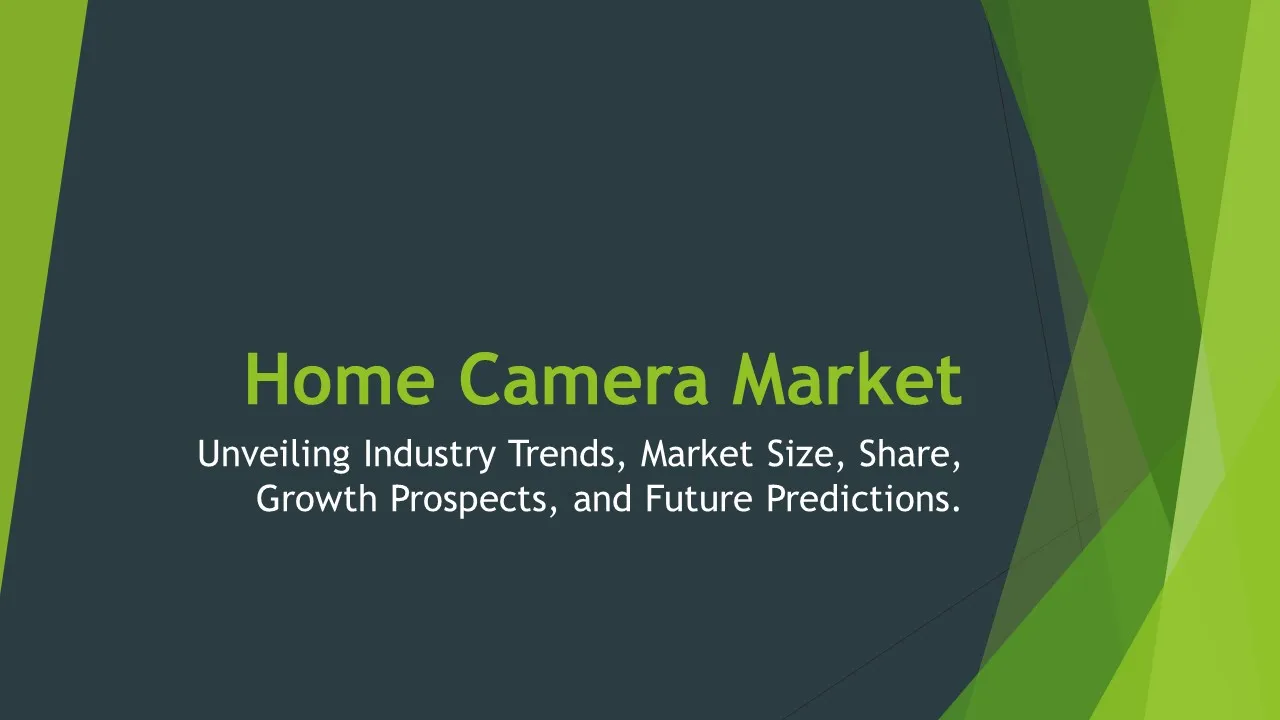Visual Impairment Assistive Technologies Products
Visual Impairment Assistive Technologies Products Market Segments - by Product Type (Braille Displays, Screen Readers, Magnifiers, Smart Glasses, Braille Printers), Application (Education, Healthcare, Employment, Independent Living, Leisure and Recreation), Distribution Channel (Online Stores, Specialty Stores, Hospitals & Clinics, Educational Institutions, Government Agencies), Technology Type (OCR Technology, AI Technology, Wearable Technology, Haptic Feedback Technology, Voice Recognition Technology), and Region (North America, Europe, Asia Pacific, Latin America, Middle East & Africa) - Global Industry Analysis, Growth, Share, Size, Trends, and Forecast 2025-2035
- Report Preview
- Table Of Content
- Segments
- Methodology
Visual Impairment Assistive Technologies Products Market Outlook
The global Visual Impairment Assistive Technologies Products market is anticipated to reach approximately USD 14.6 billion by 2035, growing at a compound annual growth rate (CAGR) of around 10.5% from 2025. This upward trajectory is driven by increasing awareness of visual impairment issues, technological advancements, and the growing population of aging individuals who often experience vision-related challenges. Additionally, the rising emphasis on inclusive education and workplace environments is further propelling the demand for assistive technologies, as stakeholders recognize the importance of providing necessary tools for individuals with visual impairments. The integration of artificial intelligence and machine learning in assistive devices is also enhancing the functionality and user experience, resulting in broader acceptance and utilization of these technologies across various sectors.
Growth Factor of the Market
Several key growth factors contribute to the expansion of the Visual Impairment Assistive Technologies Products market. First, the increasing prevalence of visual impairment and eye-related disorders globally, especially among the elderly population, has intensified the demand for effective assistive technologies. As more individuals recognize the importance of addressing visual challenges, the market sees an upward trend. Secondly, the technological innovations in assistive devices, such as improvements in screen readers and magnifiers, are enhancing the user experience and allowing for greater independence among visually impaired individuals. Furthermore, government initiatives aimed at promoting inclusivity and accessibility are providing financial support and policy frameworks that encourage the adoption of assistive technologies. The growing collaboration between technology companies and healthcare providers is also instrumental in developing tailored solutions for end-users. Finally, increasing consumer awareness and advocacy from non-profit organizations are driving the demand for more advanced and accessible assistive technologies.
Key Highlights of the Market
- The market for Visual Impairment Assistive Technologies is expected to see a robust growth rate, spurred by aging populations and rising awareness.
- Technological advancements, particularly in AI and machine learning, are revolutionizing the functionality of assistive devices.
- Government initiatives supporting inclusivity are playing a crucial role in promoting the adoption of assistive technologies.
- Educational institutions are increasingly incorporating assistive devices to enhance learning experiences for visually impaired students.
- The rise of e-commerce and online retail channels is making assistive technologies more accessible to consumers globally.
By Product Type
Braille Displays:
Braille displays serve as essential tools for visually impaired individuals, translating digital text into Braille through a series of small, movable pins that represent characters. This technology has significantly enhanced communication and learning for users, allowing them to access a wide range of information through computers, smartphones, and tablets. The demand for Braille displays is increasing due to advancements in technology that improve their portability and user-friendliness. As a result, developers are actively working on more compact designs that can integrate seamlessly with modern devices, facilitating easier access to digital content. The ability to connect these displays via Bluetooth further enhances their usability, ensuring that they remain relevant in an increasingly digital world.
Screen Readers:
Screen readers are software applications that convert digital text into synthesized speech or Braille, making them indispensable tools for individuals with visual impairments. They enable users to navigate computers, smartphones, and other digital devices independently. The increasing adoption of screen readers is linked to the rise of digital content and the growing reliance on technology for everyday tasks. Furthermore, as more educational and professional environments adopt digital platforms, the need for effective screen reader solutions becomes paramount. The integration of artificial intelligence in screen readers has improved their accuracy and efficiency, allowing for more natural-sounding speech output and better content comprehension, which has driven user satisfaction and expanded market reach.
Magnifiers:
Magnifiers, including both optical and electronic types, are widely used assistive tools that enable visually impaired individuals to enhance their ability to see text and images. Optical magnifiers are traditional devices that utilize lenses to enlarge content, while electronic magnifiers use digital screens to provide higher-definition images with adjustable zoom features. The growing demand for magnifiers is largely attributed to an aging population, where age-related vision problems such as macular degeneration and glaucoma are prevalent. Additionally, the advent of portable electronic magnifiers that are compact and easy to use has contributed to market growth, as they allow individuals to read, write, and engage with their environment with greater ease and independence.
Smart Glasses:
Smart glasses are cutting-edge assistive devices designed to enhance the vision of individuals with visual impairments through augmented reality and visual feedback technology. These glasses incorporate advanced features such as object recognition, text-to-speech capabilities, and navigation assistance, providing users with real-time information about their surroundings. The growing interest in smart glasses is fueled by the increasing incorporation of AI and machine learning, which enables the devices to learn and adapt to users' preferences over time. As a result, smart glasses are gaining traction in various applications, including personal and professional settings, further driving demand and innovation in this segment of the market.
Braille Printers:
Braille printers play a crucial role in producing accessible printed materials for individuals with visual impairments. These devices convert digital text into Braille, allowing users to receive information in a tactile format. The necessity for Braille printers is increasing in educational settings, where materials need to be provided in various formats to accommodate different learning needs. Furthermore, the ongoing efforts to promote literacy among visually impaired individuals have led to increased demand for high-quality Braille printing services. Innovations in Braille printers, such as faster printing speeds and enhanced connectivity options, are making them more appealing to educational institutions, libraries, and non-profit organizations, thereby further contributing to the growth of this product segment.
By Application
Education:
The education sector is one of the primary applications for visual impairment assistive technologies, as schools and universities increasingly recognize the importance of inclusive education. Assistive devices such as Braille displays, screen readers, and magnifiers play a vital role in empowering visually impaired students to access learning materials alongside their peers. Educational institutions are investing in these technologies to create a more equitable learning environment. Additionally, the rise of e-learning platforms necessitates the integration of assistive technologies to ensure that visually impaired students can participate fully in online education. As educational policies continue to evolve towards enhanced inclusivity, the demand for visual impairment assistive technologies in education is projected to grow significantly.
Healthcare:
In the healthcare application, assistive technologies are essential for visually impaired individuals to access medical information, communicate with healthcare providers, and manage their health effectively. Technologies such as screen readers and voice recognition systems are increasingly utilized in healthcare settings to facilitate patient interactions and improve accessibility to health-related resources. The integration of assistive devices in telehealth services is also gaining traction, as it allows visually impaired individuals to engage with healthcare professionals remotely and receive timely medical guidance. As the healthcare sector continues to prioritize patient-centered care, the demand for visual impairment assistive technologies is expected to rise, enhancing the quality of care for visually impaired individuals.
Employment:
The employment sector is progressively adopting assistive technologies to support visually impaired individuals in their pursuits of meaningful employment. Devices such as screen readers and smart glasses are empowering individuals to access digital content, communicate with colleagues, and perform job-related tasks more effectively. Companies are increasingly recognizing the value of diversity and inclusion, which is driving the demand for assistive technologies that facilitate the integration of visually impaired employees into the workforce. Additionally, government initiatives aimed at promoting employment equity for individuals with disabilities are further encouraging the adoption of these technologies in workplaces, leading to improved job opportunities and satisfaction for visually impaired individuals.
Independent Living:
Assistive technologies play a significant role in promoting independent living for visually impaired individuals, allowing them to navigate daily activities with confidence. Devices such as smart glasses and navigation apps equipped with voice recognition technology provide users with vital information about their immediate surroundings, enhancing their ability to travel independently. The increasing focus on smart home technologies also presents opportunities for integrating assistive devices that improve accessibility within the home environment. As societal perceptions shift towards empowering individuals with disabilities to lead independent lives, the demand for visual impairment assistive technologies in this application is expected to grow, fostering a sense of autonomy and self-reliance among users.
Leisure and Recreation:
In the leisure and recreation sector, assistive technologies are becoming increasingly important for visually impaired individuals seeking to engage in recreational activities. These technologies enable users to participate in sports, arts, and social activities with greater ease. For instance, audio descriptions in films and theater performances allow visually impaired individuals to enjoy entertainment experiences alongside their sighted peers. Moreover, advancements in mobile applications offer tailored recreational options, such as guided tours and audio-based games designed specifically for visually impaired users. As awareness of the importance of inclusive recreational activities grows, the demand for assistive technologies that support leisure for visually impaired individuals is likely to increase, encouraging a more comprehensive approach to accessibility in the community.
By Distribution Channel
Online Stores:
Online stores have become a prominent distribution channel for visual impairment assistive technologies, providing consumers with the convenience of shopping from home. The growth of e-commerce platforms has made it easier for individuals to access a wide range of products without geographical constraints. This channel allows consumers to compare various options, read reviews, and make informed decisions about the devices that best suit their needs. Moreover, online retailers often offer competitive pricing and promotions, making assistive technologies more financially accessible to a broader audience. The rise of direct-to-consumer sales through online platforms is expected to continue driving the growth of the market, as more visually impaired individuals recognize the benefits of purchasing these products online.
Specialty Stores:
Specialty stores that focus on assistive technologies provide valuable resources and support for visually impaired individuals. These stores typically offer a curated selection of products, including Braille displays, magnifiers, and other assistive devices tailored to the specific needs of visually impaired consumers. The personalized service and expert guidance provided by specialty store staff can greatly enhance the shopping experience, as customers can receive recommendations based on their unique requirements. Additionally, these stores may host workshops and demonstrations, allowing potential users to experience the products firsthand before making a purchase. As awareness of the importance of specialized support grows, the demand for visual impairment assistive technologies through specialty stores is likely to remain strong.
Hospitals & Clinics:
Hospitals and clinics serve as critical distribution channels for visual impairment assistive technologies, providing patients with access to essential devices during their medical care. Healthcare professionals play a vital role in recommending assistive technologies that can aid in a patient’s recovery or adaptation to visual impairments. The integration of assistive devices into rehabilitation programs is increasingly recognized as an essential component of holistic patient care. As healthcare providers continue to prioritize accessibility and inclusivity, partnerships between hospitals, clinics, and assistive technology manufacturers are expected to increase, facilitating the provision of devices that enhance patients’ quality of life. This channel's growth reflects the broader trend of patient-centered care, where the needs of individuals with visual impairments are met through proactive interventions.
Educational Institutions:
Educational institutions are essential distribution channels for visual impairment assistive technologies, as they actively seek to create inclusive learning environments. Schools and universities often collaborate with assistive technology manufacturers to provide students with the necessary tools to succeed academically. This includes everything from Braille displays and screen readers to specialized software designed to accommodate various learning styles. The education sector's commitment to inclusivity is driving the demand for assistive technologies, as institutions recognize the importance of providing equal access to education for all students. As educational policies continue to evolve to support diverse learning needs, the role of educational institutions in distributing assistive technologies will likely expand significantly.
Government Agencies:
Government agencies play a vital role in distributing visual impairment assistive technologies by implementing policies and programs that promote accessibility and support for individuals with disabilities. Many governments provide funding and resources to assistive technology programs, ensuring that visually impaired individuals have access to essential devices. These agencies often collaborate with non-profit organizations and educational institutions to create awareness about the availability of assistive technologies. Additionally, government initiatives aimed at promoting employment equity and independent living for visually impaired individuals further reinforce the importance of these technologies. As advocacy for disability rights continues to grow, the demand for visual impairment assistive technologies through government agencies is expected to increase, contributing to a more inclusive society.
By Technology Type
OCR Technology:
Optical Character Recognition (OCR) technology is at the forefront of assistive technologies for visually impaired individuals, converting printed text into digital format that can be read aloud or displayed in alternative formats. This technology enables users to access books, newspapers, and other printed materials that would otherwise be inaccessible. The integration of OCR technology into mobile applications has significantly enhanced its usability, allowing visually impaired individuals to scan text on-the-go using their smartphones. The increasing accuracy and speed of OCR systems, along with the development of user-friendly applications, have broadened the appeal of this technology, driving demand across various sectors, including education, healthcare, and leisure.
AI Technology:
Artificial Intelligence (AI) technology is revolutionizing assistive devices by enhancing their capabilities and improving user experiences. AI-powered applications can analyze and interpret visual information, providing users with real-time feedback and navigation assistance. Technologies such as facial recognition, object detection, and environment mapping are increasingly being integrated into devices, allowing visually impaired individuals to interact more seamlessly with their surroundings. The growing demand for AI technology in assistive devices is linked to its potential to create more personalized and adaptive solutions that cater to individual preferences and needs, thereby fostering greater independence and confidence among users.
Wearable Technology:
Wearable technology is gaining traction as a critical component of assistive technologies for visually impaired individuals. Devices such as smart glasses and wearable navigation aids provide users with real-time information about their environment while allowing for hands-free operation. These technologies often incorporate features such as audio feedback, haptic alerts, and GPS functionality, enabling users to navigate complex environments with ease. The growing interest in wearable technology is fueled by advancements in miniaturization, battery life, and user interface design, making these devices more practical and appealing. As the market for wearable assistive technologies expands, the emphasis on comfort and usability will continue to drive innovation in this segment.
Haptic Feedback Technology:
Haptic feedback technology is an innovative approach in assistive devices that provides tactile sensations to users, enhancing their ability to perceive information through touch. This technology is particularly useful in applications where visual input is limited or unavailable. Haptic feedback can be integrated into various devices, including braille displays and smart glasses, to convey information about objects and surroundings. The growing recognition of the importance of multisensory experiences in assistive technologies is expected to drive demand for haptic feedback solutions. As manufacturers continue to innovate and improve the efficacy of haptic technology, its adoption in assistive devices for visually impaired individuals will likely increase.
Voice Recognition Technology:
Voice recognition technology has become an integral part of visual impairment assistive devices, allowing users to interact with their devices through spoken commands. This technology simplifies the navigation of digital content and enhances accessibility for visually impaired individuals. The increasing accuracy and responsiveness of voice recognition systems have made them an attractive option for users, facilitating tasks such as reading, searching for information, and controlling smart home devices. As voice-activated technologies continue to evolve, their integration into assistive devices will expand, promoting independence and improving the overall user experience for visually impaired individuals. The growing trend towards hands-free operation aligns well with the needs of this demographic, further driving the adoption of voice recognition technology.
By Region
The North American market for visual impairment assistive technologies is expected to dominate the global landscape, driven by high awareness levels, advanced healthcare infrastructure, and robust support systems for individuals with disabilities. With an estimated share of around 35% of the global market, the region's continuous focus on inclusivity and accessibility significantly contributes to the growing demand for assistive technologies. Advancements in technology, such as AI and machine learning, are further enhancing the user experience in North America, ensuring that the region remains at the forefront of innovation in this space. The projected CAGR for North America is approximately 11% over the forecast period, indicating sustained growth and investment in assistive technologies.
Europe is also witnessing significant growth in the visual impairment assistive technologies market, accounting for around 30% of the global share. The region's commitment to social welfare and inclusion of individuals with disabilities serves as a catalyst for the adoption of assistive technologies. Initiatives from governments and non-profit organizations to promote accessibility in public spaces and educational institutions are enhancing the visibility and availability of these products. Moreover, technological advancements, particularly in the realm of digital solutions, are driving the expansion of assistive technologies across various applications in Europe. As a result, the European market is projected to experience a CAGR of around 9% from 2025 to 2035, highlighting its importance in the global landscape.
Opportunities
The visual impairment assistive technologies market presents numerous opportunities for growth and innovation. One of the most promising areas lies in the integration of emerging technologies such as artificial intelligence, machine learning, and the Internet of Things (IoT). These advancements enable the development of more personalized and adaptive solutions that cater to the unique needs of visually impaired individuals. For instance, AI-driven applications can recognize objects and provide auditory information about the environment, thereby enhancing navigation and interaction. Additionally, the growing trend of smart homes offers opportunities for the integration of assistive technologies that enhance accessibility and independence for visually impaired individuals, allowing them to control their environment more easily. As stakeholders seek to develop solutions that promote inclusivity and empower individuals, the intersection of assistive technologies and emerging technologies presents significant business opportunities.
Moreover, increasing government support and funding for disability services and assistive technologies provide further avenues for market expansion. Many governments are implementing policies aimed at improving accessibility in public spaces, education, and employment, thereby driving demand for assistive devices. Collaborations between assistive technology manufacturers and government agencies can lead to innovative solutions that address the needs of visually impaired individuals. Furthermore, the rising awareness of visual impairment issues among the general public is fostering a more supportive environment for the development and adoption of assistive technologies. As individuals become more informed about the challenges faced by those with visual impairments, advocacy efforts are likely to gain momentum, encouraging additional investments and initiatives aimed at enhancing accessibility and inclusivity in society.
Threats
Despite the promising growth trajectory of the visual impairment assistive technologies market, several threats could hinder its progress. One significant concern is the rapid pace of technological change, which can outstrip the ability of manufacturers and stakeholders to keep up with evolving consumer demands. As new technologies emerge, companies must continually innovate to remain competitive, which can strain resources and lead to potential market disruptions. Additionally, the prevalence of counterfeit or substandard assistive devices poses a threat to consumer safety and trust in the market. Consumers may be deterred from investing in assistive technologies if they are unsure of a product's quality or efficacy, ultimately impacting overall market growth. Furthermore, disparities in access to technology in different regions could exacerbate inequalities, leaving some individuals without the necessary support to enhance their quality of life.
Another potential threat lies in economic fluctuations and changes in funding for disability services. Global economic downturns or shifts in government priorities could lead to reduced allocations for assistive technologies, resulting in decreased availability and access for visually impaired individuals. This scenario underscores the importance of advocacy and strong partnerships within the industry to ensure sustained investment and support for the development of assistive devices. Lastly, the challenge of raising awareness about the capabilities and benefits of assistive technologies remains critical, as many individuals with visual impairments may not be aware of available solutions that could improve their lives. Addressing these threats will require collaboration among stakeholders to mitigate risks and promote growth in the visual impairment assistive technologies market.
Competitor Outlook
- Freedom Scientific
- HumanWare
- Vispero
- Optelec
- ZoomText
- Aira
- OrCam Technologies
- IRISVision
- BrailleWorks
- Envision
- Microsoft (Seeing AI)
- Apple (VoiceOver)
- Google (TalkBack)
- Nuance Communications (Dragon NaturallySpeaking)
- Be My Eyes
- Voiceitt
The competitive landscape of the visual impairment assistive technologies market is characterized by a diverse array of companies offering innovative products and solutions. Some key players in this market include Freedom Scientific, HumanWare, and Vispero, which are renowned for their cutting-edge assistive technologies such as screen readers and Braille displays. These companies have established strong brand recognition and customer loyalty by continually investing in research and development to enhance their product offerings. Additionally, the emergence of startups and smaller companies is driving innovation in the market, as these entities often focus on niche solutions that cater to specific user needs. This dynamic environment fosters healthy competition and encourages companies to differentiate themselves through unique features, pricing strategies, and customer support services.
Moreover, partnerships and collaborations among industry players, educational institutions, and government agencies are becoming increasingly vital in shaping the competitive landscape. By pooling resources and expertise, companies can improve their product offerings and expand their reach in the market. For instance, collaborations with educational institutions can facilitate the development of assistive technologies that meet specific learning requirements for visually impaired students. Furthermore, strategic alliances with non-profit organizations can enhance awareness of assistive technologies and promote greater accessibility within communities. As stakeholders work together to create a more inclusive environment, the competitive dynamics of the visual impairment assistive technologies market will continue to evolve, leading to faster advancements and improved user experiences.
Among the major companies in the visual impairment assistive technologies market, Freedom Scientific stands out for its comprehensive range of products, including JAWS (Job Access With Speech), one of the most widely used screen readers globally. With a commitment to innovation, Freedom Scientific continually updates its offerings to meet the changing needs of visually impaired users. Similarly, HumanWare is recognized for its focus on creating user-friendly Braille devices and innovative solutions that empower individuals with visual impairments. The company’s offerings, such as the Brailliant Braille displays and the Victor Reader line of products, have gained widespread acclaim for their functionality and ease of use. Vispero, a parent company of several well-known brands, including Freedom Scientific, continues to drive innovation in the assistive technology sector by integrating new technologies and expanding its product portfolio to cater to a diverse range of users.
1 Appendix
- 1.1 List of Tables
- 1.2 List of Figures
2 Introduction
- 2.1 Market Definition
- 2.2 Scope of the Report
- 2.3 Study Assumptions
- 2.4 Base Currency & Forecast Periods
3 Market Dynamics
- 3.1 Market Growth Factors
- 3.2 Economic & Global Events
- 3.3 Innovation Trends
- 3.4 Supply Chain Analysis
4 Consumer Behavior
- 4.1 Market Trends
- 4.2 Pricing Analysis
- 4.3 Buyer Insights
5 Key Player Profiles
- 5.1 Aira
- 5.1.1 Business Overview
- 5.1.2 Products & Services
- 5.1.3 Financials
- 5.1.4 Recent Developments
- 5.1.5 SWOT Analysis
- 5.2 Optelec
- 5.2.1 Business Overview
- 5.2.2 Products & Services
- 5.2.3 Financials
- 5.2.4 Recent Developments
- 5.2.5 SWOT Analysis
- 5.3 Vispero
- 5.3.1 Business Overview
- 5.3.2 Products & Services
- 5.3.3 Financials
- 5.3.4 Recent Developments
- 5.3.5 SWOT Analysis
- 5.4 Envision
- 5.4.1 Business Overview
- 5.4.2 Products & Services
- 5.4.3 Financials
- 5.4.4 Recent Developments
- 5.4.5 SWOT Analysis
- 5.5 Voiceitt
- 5.5.1 Business Overview
- 5.5.2 Products & Services
- 5.5.3 Financials
- 5.5.4 Recent Developments
- 5.5.5 SWOT Analysis
- 5.6 ZoomText
- 5.6.1 Business Overview
- 5.6.2 Products & Services
- 5.6.3 Financials
- 5.6.4 Recent Developments
- 5.6.5 SWOT Analysis
- 5.7 HumanWare
- 5.7.1 Business Overview
- 5.7.2 Products & Services
- 5.7.3 Financials
- 5.7.4 Recent Developments
- 5.7.5 SWOT Analysis
- 5.8 Be My Eyes
- 5.8.1 Business Overview
- 5.8.2 Products & Services
- 5.8.3 Financials
- 5.8.4 Recent Developments
- 5.8.5 SWOT Analysis
- 5.9 IRISVision
- 5.9.1 Business Overview
- 5.9.2 Products & Services
- 5.9.3 Financials
- 5.9.4 Recent Developments
- 5.9.5 SWOT Analysis
- 5.10 BrailleWorks
- 5.10.1 Business Overview
- 5.10.2 Products & Services
- 5.10.3 Financials
- 5.10.4 Recent Developments
- 5.10.5 SWOT Analysis
- 5.11 Apple (VoiceOver)
- 5.11.1 Business Overview
- 5.11.2 Products & Services
- 5.11.3 Financials
- 5.11.4 Recent Developments
- 5.11.5 SWOT Analysis
- 5.12 Google (TalkBack)
- 5.12.1 Business Overview
- 5.12.2 Products & Services
- 5.12.3 Financials
- 5.12.4 Recent Developments
- 5.12.5 SWOT Analysis
- 5.13 Freedom Scientific
- 5.13.1 Business Overview
- 5.13.2 Products & Services
- 5.13.3 Financials
- 5.13.4 Recent Developments
- 5.13.5 SWOT Analysis
- 5.14 OrCam Technologies
- 5.14.1 Business Overview
- 5.14.2 Products & Services
- 5.14.3 Financials
- 5.14.4 Recent Developments
- 5.14.5 SWOT Analysis
- 5.15 Microsoft (Seeing AI)
- 5.15.1 Business Overview
- 5.15.2 Products & Services
- 5.15.3 Financials
- 5.15.4 Recent Developments
- 5.15.5 SWOT Analysis
- 5.16 Nuance Communications (Dragon NaturallySpeaking)
- 5.16.1 Business Overview
- 5.16.2 Products & Services
- 5.16.3 Financials
- 5.16.4 Recent Developments
- 5.16.5 SWOT Analysis
- 5.1 Aira
6 Market Segmentation
- 6.1 Visual Impairment Assistive Technologies Products Market, By Application
- 6.1.1 Education
- 6.1.2 Healthcare
- 6.1.3 Employment
- 6.1.4 Independent Living
- 6.1.5 Leisure and Recreation
- 6.2 Visual Impairment Assistive Technologies Products Market, By Product Type
- 6.2.1 Braille Displays
- 6.2.2 Screen Readers
- 6.2.3 Magnifiers
- 6.2.4 Smart Glasses
- 6.2.5 Braille Printers
- 6.3 Visual Impairment Assistive Technologies Products Market, By Distribution Channel
- 6.3.1 Online Stores
- 6.3.2 Specialty Stores
- 6.3.3 Hospitals & Clinics
- 6.3.4 Educational Institutions
- 6.3.5 Government Agencies
- 6.1 Visual Impairment Assistive Technologies Products Market, By Application
7 Competitive Analysis
- 7.1 Key Player Comparison
- 7.2 Market Share Analysis
- 7.3 Investment Trends
- 7.4 SWOT Analysis
8 Research Methodology
- 8.1 Analysis Design
- 8.2 Research Phases
- 8.3 Study Timeline
9 Future Market Outlook
- 9.1 Growth Forecast
- 9.2 Market Evolution
10 Geographical Overview
- 10.1 Europe - Market Analysis
- 10.1.1 By Country
- 10.1.1.1 UK
- 10.1.1.2 France
- 10.1.1.3 Germany
- 10.1.1.4 Spain
- 10.1.1.5 Italy
- 10.1.1 By Country
- 10.2 Asia Pacific - Market Analysis
- 10.2.1 By Country
- 10.2.1.1 India
- 10.2.1.2 China
- 10.2.1.3 Japan
- 10.2.1.4 South Korea
- 10.2.1 By Country
- 10.3 Latin America - Market Analysis
- 10.3.1 By Country
- 10.3.1.1 Brazil
- 10.3.1.2 Argentina
- 10.3.1.3 Mexico
- 10.3.1 By Country
- 10.4 North America - Market Analysis
- 10.4.1 By Country
- 10.4.1.1 USA
- 10.4.1.2 Canada
- 10.4.1 By Country
- 10.5 Middle East & Africa - Market Analysis
- 10.5.1 By Country
- 10.5.1.1 Middle East
- 10.5.1.2 Africa
- 10.5.1 By Country
- 10.6 Visual Impairment Assistive Technologies Products Market by Region
- 10.1 Europe - Market Analysis
11 Global Economic Factors
- 11.1 Inflation Impact
- 11.2 Trade Policies
12 Technology & Innovation
- 12.1 Emerging Technologies
- 12.2 AI & Digital Trends
- 12.3 Patent Research
13 Investment & Market Growth
- 13.1 Funding Trends
- 13.2 Future Market Projections
14 Market Overview & Key Insights
- 14.1 Executive Summary
- 14.2 Key Trends
- 14.3 Market Challenges
- 14.4 Regulatory Landscape
Segments Analyzed in the Report
The global Visual Impairment Assistive Technologies Products market is categorized based on
By Product Type
- Braille Displays
- Screen Readers
- Magnifiers
- Smart Glasses
- Braille Printers
By Application
- Education
- Healthcare
- Employment
- Independent Living
- Leisure and Recreation
By Distribution Channel
- Online Stores
- Specialty Stores
- Hospitals & Clinics
- Educational Institutions
- Government Agencies
By Region
- North America
- Europe
- Asia Pacific
- Latin America
- Middle East & Africa
Key Players
- Freedom Scientific
- HumanWare
- Vispero
- Optelec
- ZoomText
- Aira
- OrCam Technologies
- IRISVision
- BrailleWorks
- Envision
- Microsoft (Seeing AI)
- Apple (VoiceOver)
- Google (TalkBack)
- Nuance Communications (Dragon NaturallySpeaking)
- Be My Eyes
- Voiceitt
- Publish Date : Jan 21 ,2025
- Report ID : CO-27611
- No. Of Pages : 100
- Format : |
- Ratings : 4.5 (110 Reviews)









